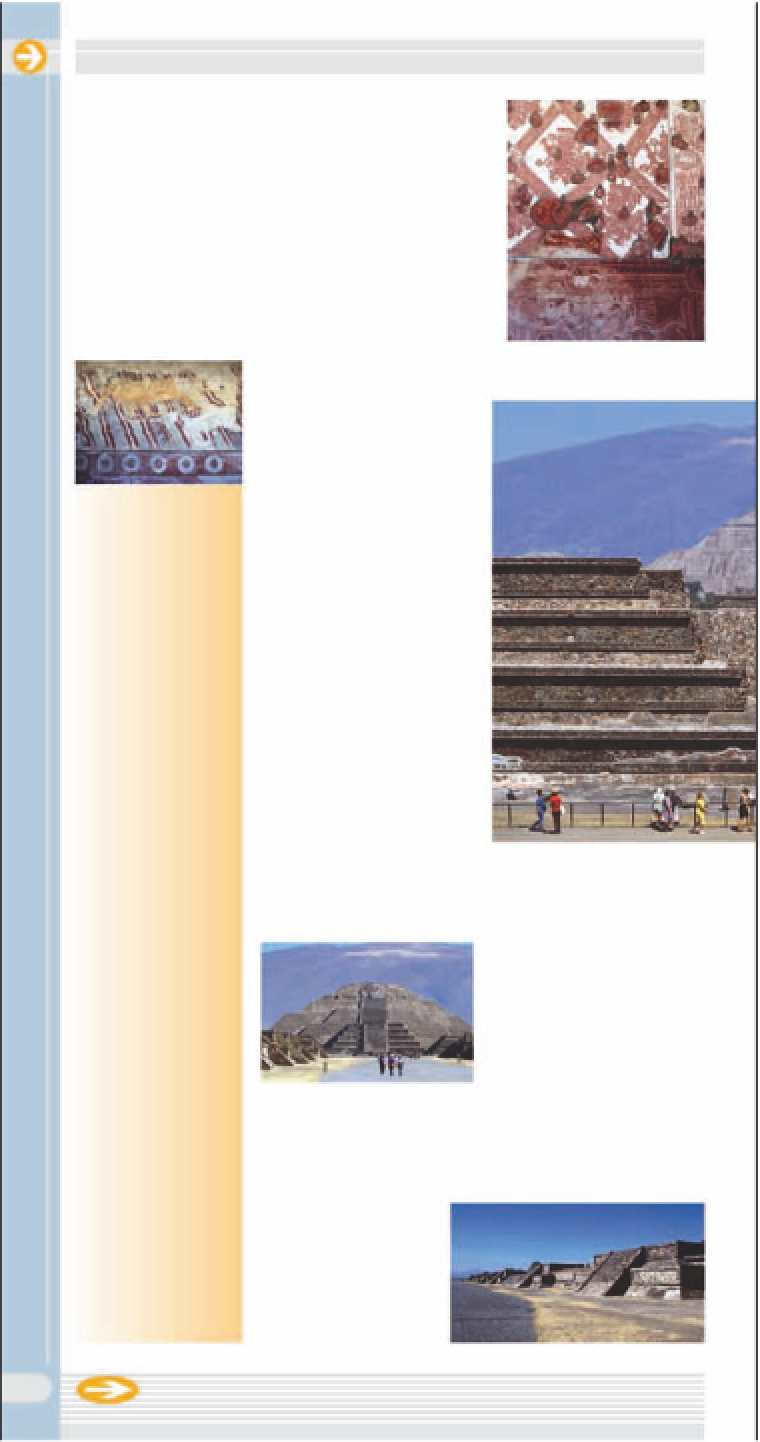Travel Reference
In-Depth Information
Teotihuacán
Founded around 100 BC, Teotihuacán became
Mesoamerica's cultural and commercial center. At
its peak - around AD 650 - it covered 8 sq miles
(20 sq km) and included pyramids, temples, and
housing for 200,000 people. However, very little
is known about this great civilization and why
they eventually abandoned the city.
Partially restored mural
depicting feathered coyotes
Top 10 Features
1 Pyramid of the Sun
2 Pyramid of the Moon
3 Avenue of the Dead
4 Quetzalpapalotl Palace
Complex
5 Temple of Quetzalcoatl
6 Museum
7 Ciudadela
8 Palace of Temantitla
9 Tetitla
0 Atetelco
Jaguar Mural, along the
Avenue of the Dead
Many Mexico City
travel agencies offer
sightseeing bus tours
to Teotihuacán daily.
The best view of the
ruins is from the top
of the Pyramid of the
Moon.
!
Pyramid of the Sun
The pyramid's base
measures 738 ft (225 m)
along each side. A tunnel
under the main staircase
leads to small chambers of
ceremonial importance. A
monumental staircase with
248 steep steps and five
landings rises 213 ft (65 m)
to a flat platform that once
supported a temple.
There is a tram that
stops at the major
attractions.
There is a restaurant
and café at the Visitor
Center.
£
Avenue of the Dead
From the Pyramid of the
Moon a 1-mile (2-km) long
road leads to the Citadel,
and continues another 2
miles (3 km) beyond the
excavations. The 131-ft (40-
m) wide road is lined with
nearly identical buildings
which the Aztecs mistakenly
believed to be tombs when
they named the road.
Archeologists believe that
these were used to house
civic, government, and
religious functions
(below)
.
t.FYJDP4UBUF-BT
1JSÈNJEFT.FY%
UPMMNJMFTLN
/&PG.FYJDP$JUZ
t
t
.FUSPUP"VUPCVTFT
EFM/PSUF5IFOUBLF#VT
NBSLFEi1ÓSBNJEFTw
GSPN$FOUSBMEF
"VUPCVTFTEFM/PSUFJO
.FYJDP$JUZ
t
BNoQN
tQFTPT
t
.VTFVNBNoQN
EBJMZQFTPTGSFF
4VOUSBNQFTPT
tXXXWJTJUNFYJDPDPN
@
Pyramid of the
Moon
The oldest and most
important pyramid stands at
the north end of the
Avenue of the Dead
(above)
. Archeological
excavations have
revealed several burial
sites within, that have
sacrificial victims and
exquisite offerings.
32
Teotihuacán or “Place of the Gods” was named by the Aztecs







































